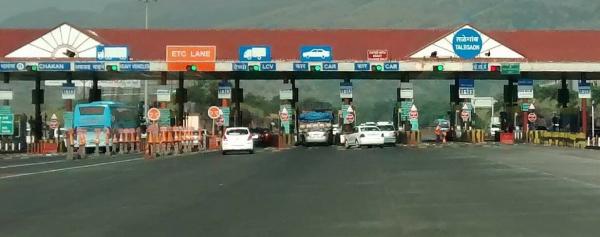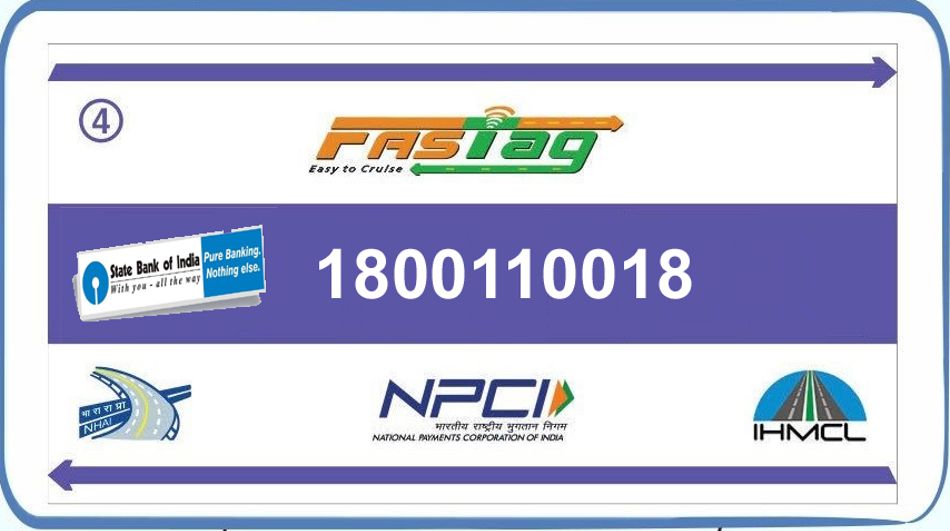
We have encountered toll-tax during our travels. It is applicable, irrespective of our medium of travel, be it public transport, hired commercial vehicle, or our own private vehicle. Public and commercial vehicles attract varied kinds of taxes. For example, Octroi, City entry tax, Toll, etc.
In the Union of Bharat, under the aegis of National Highways Authority of India (NHAI), the National Highway network footprint is ever-increasing. Every day, approximately 27 km new National Highways were laid in the financial year 2017-18; per the latest statistics. Toll-tax is collected on most of the new National Highways.
In this article, we would analyse the toll-collection methods vis-à-vis the National Highways.
Traditional Toll Collection
Traditionally, completely manual or partially automated (human and machine) toll collection methods are deployed. Firstly, we would discuss the Pros and Cons of these Toll Collection methods.

From multiple angles, the partially automated method is a technology-aided advanced version of the human-operated toll booths. Wherein, the automatic boom-barrier replaces the human-operated barrier, however, for receipt etc. they warrant human presence. Its processing capacity is 500 vehicles per hour (per lane); compared to manually operated barrier’s 350 vehicles.
Pros
We would appreciate that the construction of contemporary highways was triggered by these toll collection methods. Allowing a non-stop and swift travel experience resulting in the reduction of time, fuel consumption, and unwanted stress on the vehicle & driver. Moreover, the decrease in crude oil import adds to the financial coffers of Bharat.
Cons
The toll-tax is paid for the entire Highway length in conventional toll collection methods, irrespective of the destination distance from the toll plaza. Moreover, in Bharat, various factors contribute towards achieving an average processing rate of 300 vehicles per hour (per lane). Consequently, occasionally questioning the rationale of traditional toll-tax collection methods is logical.
The advent of 'Fast-Tag' — RFID tag
Similar to the, inherently, progressive nature of 'time and tide', technology grows continuously. And, mitigates the functional and operational challenges encountered during this progression. In the toll tax collection parlance, contemporary Avatar of Technology is 'Fast-Tag'; commercially coined as 'FasTag'.
It offers a non-stop passage through the toll plaza, moreover, without noticeably altering vehicle speed. Efficient toll plaza operation is the result as they can let 1,200 vehicles pass per hour (per lane).
NHAI is promoting FasTag to increase its acceptance and usage, thus, bringing transparency into toll collection and eliminate long queues at toll plazas. FasTag(s) can be procured from NHAI offices and participating banks. Information from NHAI indicates that, in the near future, FasTag may be available from petrol pumps.
The Ministry of Road Transport and Highways notification (2017) mandates compulsory affixing of RFID Fast-Tag for new vehicles; either by the manufacturer or dealer. If you purchased and registered your vehicle before that, you may buy a Fast-Tag and paste it on your vehicle. It is as easy or difficult as pasting a sticker.
The operation
The Fast-Tag gets glued to the vehicle windscreen. It is an electronic chip that contains the information about the vehicle and owner. Therefore, at the Toll Plaza, it acts as an identification card.
At about 80 meters from the RFID capable toll booth, the relevant reading equipment (sensors) are deployed. When the vehicle passes from the close proximity of the RFID reading sensors, using radio waves, information stored on the tag is read. On successful verification and availability of funds in the tag, the toll gate opens automatically and vehicle crosses toll plaza, unhindered.
Payment process
FasTag uses Electronic Toll Collection (ETC). It has two options for payment, in case of post-paid, tag is linked to Bank Account, Debit, or Credit Card. Another possibility is opting for a prepaid tag.
Entire tag related information - viz., vehicle classification (lorry, car, etc.), sufficient funds (for prepaid tag), etc. - gets verified by the RFID card readers. Upon reaching within a 10m range of these readers, the particulars are cross verified and two alternatives are offered. The vehicles with tags capable of the required financial transaction are allowed to pass through the Fast-Lane. Other vehicles, must exit the Fast-Lane to choose another Lane and mode of payment.
The toll tax is automatically collected from the approved tags, via the chosen method. A mobile message confirms the transaction. Moreover, the NHAI mandated toll plazas offer a 5% cash back on these electronic transactions.
Fast-Tags and Geo-Fencing
Modern FasTag readers/sensors are GPS enabled, which makes accurate tracking of the vehicle on toll roads possible. With the help of GPS, NHAI has created a Geo-Fence (a virtual fence/boundary) around toll highways. Geo-Fencing clubbed with FasTag tracks, registers, and stores the exact point of entry and exit of a vehicle on the highway. This leads to collection of the toll just for the distance travelled by the vehicle. Moreover, drivers can choose the route that takes minimum time and has the least traffic.
Fast-Tag — Road to 'clean' transactions
FasTag enables completely automated Electronic Toll Collection where multiple independent organisations perform various tasks like selling FasTag, recharge or deduction of the amount, sensing entry/exit of the vehicle, etc. All these intermediary operators are complementary in nature and, together, they complete the toll collection operation. Therefore, ensuring accurate accounting and, also, that the collected toll is distributed to relevant organisations in accordance with the contract.
This brings transparency to toll collection leading to the elimination of corruption, which was rampant in traditional toll collection methods.
Summary
These new age FasTags are a boon for the travellers using National Highways. FasTags offers a Swift and comfortable ride, along with the guarantee that the toll tax payment will be reaching the intended recipient. The Geo-Fencing feature, additionally, ensures optimum payment of toll. For commercial vehicles plying on the highways, repeatedly, this brings relief to fleet owners as their drivers have one less task at their hands apart from saving on time.
RFID enabled toll collection is coming to cities from highways. Installation of RFID capable toll plazas, for collecting the city entry tax at borders, by the Municipal Corporation of Delhi is the latest example.
Bon Voyage, for your next RFID FasTag enabled journey on the highway! Do share your experience with us.


